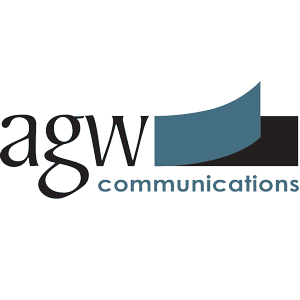PITTSBURGH, May 11, 2020 (GLOBE NEWSWIRE) -- GNC Holdings, Inc. (NYSE: GNC) reported consolidated revenue of $472.6 million in the first quarter of 2020, compared with consolidated revenue of $564.8 million in the first quarter of 2019. The decrease in revenue was largely due to the closure of company-owned stores under our store portfolio optimization strategy, sales declines during the second half of March due to the COVID-19 pandemic, the transfer of the Nutra manufacturing to the Manufacturing joint venture ("Manufacturing JV"), U.S. company-owned negative same store sales and lower domestic and international franchise revenue.
Key Updates
- E-Commerce revenues grew approximately 25% compared with the first quarter of 2019 driven by improved site performance and increased demand related to COVID-19
- Implemented e-commerce order management system early in the first quarter of 2020 and accelerated ship from store capabilities in over 100 locations in the second quarter of 2020
- Launched curbside pickup in the first quarter to allow our customers to continue to receive their needed GNC products while enabling social distancing
- Due to impacts of COVID-19, the company has significantly reduced inventory purchases and capital expenditures, as well as taken action to decrease costs by nearly $40 million in 2020 consisting of employee furloughs, marketing reductions, store hours reductions and deferral of non-essential spend
- Continue to evaluate all strategic alternatives to address upcoming debt maturities, including refinancing and restructuring options
For the first quarter of 2020, the Company reported a net loss of $200.1 million compared with net loss of $15.3 million in the prior year quarter. Diluted loss per share was $2.45 in the current quarter compared with diluted loss per share of $0.23 in the prior year quarter. Excluding non-cash long-lived asset impairment charges and certain other expenses as outlined in the table below, adjusted net loss(1) was $11.0 million in the current quarter, compared with adjusted net income(1) of $19.0 million in the prior year quarter. Adjusted loss per share(1) was $0.19 in the current quarter compared with adjusted earnings per share ("EPS")(1) of $0.15 in the prior year quarter.
Adjusted EBITDA(2), as defined and reconciled to net loss in the table below, was $31.0 million, or 6.6% of revenue in the current quarter compared with $66.9 million, or 11.7% of revenue in the prior year quarter.
______________________
(1) This Non-GAAP financial measure is reconciled to relevant GAAP metrics below under the caption "Reconciliation of Net Loss and Diluted EPS to Adjusted Net (Loss) Income and Adjusted EPS"
(2) This Non-GAAP financial measure is reconciled to relevant GAAP metrics below under the caption "Reconciliation of Net Loss to Adjusted EBITDA"
“As people around the globe cope with the COVID-19 outbreak, GNC’s mission has never been more clear,” said CEO Ken Martindale. “While this unprecedented situation has significantly disrupted our business and required us to make difficult decisions, we are focused on supporting customers with high quality products through our strong e-commerce channels and new buy-online-ship-from-store and curbside pickup services. Our transformation into a true omni-channel brand continues and we are working diligently to reposition and restructure our business for the future."
Uncertainty Relating to COVID-19
Our business has been materially and adversely affected by the outbreak of the novel coronavirus known as “COVID-19”. During March 2020, many state governments ordered all but certain essential businesses closed and imposed significant limitations on the circulation of the populace. Approximately 1,300, or 40%, respectively, of the U.S. and Canada company-owned and franchise retail stores were closed as of May 6, 2020 due to the COVID-19 pandemic. Some of the stores temporarily closed may be closed permanently in the future.
Due to the current and future potential impact of COVID-19, including uncertainties on the severity of the virus, the duration of the outbreak, governmental, business or other actions (which could include limitations on our operations), impacts on our supply chain, the effect on customer demand, temporary and permanent store closures or changes to our operations, we have recorded charges to carrying amount of inventory, accounts receivable, goodwill, indefinite-lived intangibles, our equity method investment and other long-lived assets during the three months ended March 31, 2020.
Segment Operating Performance
U.S. & Canada
Revenues in the U.S. and Canada segment decreased $65.0 million, or 13.3%, to $424.2 million for the three months ended March 31, 2020 compared with $489.2 million in the prior year quarter. E-commerce sales were 10.6% of U.S. and Canada revenue for the three months ended March 31, 2020 compared with 7.4% in the prior year quarter.
A decrease of 10.1% in U.S. company-owned same store sales, including e-commerce sales, resulted in a $35.8 million decrease to revenue for the three months ended March 31, 2020 compared with the prior year quarter, of which approximately $20 million was attributed to the impact of COVID-19 in the second half of March compared with sales trends during the first quarter of 2020 prior to the pandemic outbreak. The closure of company-owned stores under our store portfolio optimization strategy resulted in a $20.7 million decrease in revenue. In addition, domestic franchise revenue decreased by $8.3 million due to a decrease in same store sales of 10.2% and a decrease in the number of franchise stores.
Operating loss was $131.2 million for the three months ended March 31, 2020 compared with operating income of $52.1 million for the same period in 2019. Operating loss in the current quarter included $88.6 million non-cash brand impairment and $40.3 million other long-lived asset impairment charges and store closing costs. In addition, the Company recorded $22.4 million reserves for inventory obsolescence and vendor allowances, $7.9 million allowance for doubtful accounts, and $1.1 million in severance and other expenses as outlined in the table below in connection to the estimated adverse impacts from the COVID-19. Excluding these items, operating income was $29.1 million, or 6.9% of segment revenue, in the current quarter compared with $52.1 million, or 10.7% of segment revenue, in the prior year quarter. The decrease in operating income percentage in the current quarter compared to the prior year quarter was primarily due to occupancy, salaries and benefits expense deleverage associated with lower sales.
International
Revenues in the International segment decreased $7.4 million, or 18.0%, to $33.5 million for the three months ended March 31, 2020 compared with $40.9 million in the prior year quarter primarily due to the outbreak of COVID-19 which caused business disruption in the International segment beginning in January 2020. Revenue from our international franchisees decreased by $6.4 million in the current quarter compared with the prior year quarter due to lower sales primarily in the Asian markets as a result of the COVID-19 pandemic.
Operating loss was $17.4 million for the three months ended March 31, 2020. Operating loss in the current quarter included non-cash goodwill and brand impairment of $28.6 million. Excluding the non-cash impairment charges in the current quarter, operating income was $11.2 million, or 33.4% of segment revenue, compared with $14.1 million, or 34.3% of segment revenue, for the same period in 2019. The decrease in operating income percentage was primarily due to a lower margin rate driven by changes in revenue mix within the segment as a result of the transfer of the China business to the joint ventures effective February 13, 2019.
Manufacturing / Wholesale
Revenues in the Manufacturing / Wholesale segment, excluding intersegment sales, decreased $19.8 million, or 57.2%, to $14.9 million for the three months ended March 31, 2020 compared with $34.7 million in the prior year quarter primarily due to the transfer of the Nutra manufacturing business to the Manufacturing JV formed with International Vitamin Corporation ("IVC") effective March 1, 2019. Sales to our wholesale partners decreased $4.0 million, or 21.4%, from $18.9 million in the prior year quarter to $14.9 million in the current quarter largely due to the closures of our Rite Aid store-within-a-store as a result of Walgreens' acquisition of certain Rite Aid locations.
Operating income decreased $8.4 million, or 54.8%, to $6.9 million, or 46.7% of segment revenue, for the three months ended March 31, 2020 compared with $15.3 million, or 21.9% of segment revenue, in the prior year quarter. The increase in operating income percentage was primarily due to a decrease in revenues as a result of the Manufacturing JV transaction, however, operating income margins were positively impacted as the Manufacturing / Wholesale segment recognized profit margin that resulted from maintaining consistent pricing to what was charged to our other operating segments prior to the inception of the Manufacturing JV.
Cash Flow and Liquidity Metrics
For the three months ended March 31, 2020, cash used in operating activities was $12.1 million compared with cash provided by operating activities of $68.7 million for the three months ended March 31, 2019. The decrease in cash from operating activities was driven by a decrease in operating income and unfavorable working capital changes. For the three months ended March 31, 2020, the Company had negative free cash flow(3) of $15.9 million compared with free cash flow of $65.7 million for the three months ended March 31, 2019.
For the three months ended March 31, 2020, the Company paid down $11.7 million of its Tranche B-2 Term Loan utilizing proceeds from IVC's purchase of equity interest in the Manufacturing JV during the first quarter of 2020.
At March 31, 2020, the Company’s cash and cash equivalents were $137.4 million and debt was $895.0 million. The Company had $30.0 million borrowings outstanding on the Revolving Credit Facility at March 31, 2020. During April 2020, the Company borrowed an additional $30.0 million on the Revolving Credit Facility and as of April 30, 2020, we had $60.0 million borrowing outstanding.
As further discussed below, the Company has an accelerated maturity payment due on May 16, 2020 (the “Springing Maturity Date”) that it does not have the ability to pay. Since the Company has not refinanced the $738.7 million of Tranche B-2 Term Loan, FILO Term Loan and Revolving Credit Facility that will become due on the Springing Maturity Date, management has concluded there is substantial doubt regarding the Company's ability to continue as a going concern within one year from the issuance date of the Company’s Consolidated Financial Statements. Failure to complete a refinancing or other restructuring, obtain an extension of the Springing Maturity Date as defined in the Credit Agreements, reach an agreement with required lender groups under the Credit Agreements prior to May 16, 2020 or to reach an agreement with the Company's stakeholders on the terms of an out-of-court restructuring would have a material adverse effect on the Company's liquidity, financial condition and results of operations and may result in filing a voluntary petition for relief under Chapter 11 of the United States Bankruptcy Code in order to implement a restructuring plan. As of March 31, 2020, the Company's outstanding indebtedness has been classified as current on the Company's Consolidated Balance Sheets. In addition, the Company accelerated the amortization of original issuance discount and deferred financing fees for the Tranche B-2 Term Loan, FILO Term Loan and the Revolving Credit Facility of $12.4 million to the Springing Maturity Date.
________________
(3) This Non-GAAP financial measure is reconciled to relevant GAAP metrics below, under the caption "Reconciliation of Net Cash Provided by Operating Activities to Free Cash Flow." The Company defines free cash flow as cash provided by operating activities less capital expenditures
At March 31, 2020, the Company's indebtedness includes $156.4 million of outstanding indebtedness under the convertible senior notes ("Notes"), $434.8 million of outstanding indebtedness under the Tranche B-2 Term Loan, and $273.9 million of outstanding indebtedness under the FILO Term Loan. The Company made an excess cash flow payment of $25.9 million that was due in April 2020 which reduced the outstanding amount of the Tranche B-2 Term Loan. Each of the Tranche B-2 Term Loan, FILO Term Loan and Revolving Credit facility include an accelerated maturity date of May 16, 2020 if more than $50 million of the Notes are outstanding on such date. The Company does not have the ability to reduce the outstanding balance on the Notes from $156.4 million to below $50 million with projected cash on hand and new borrowings under the Revolving Credit Facility, assuming such borrowings remain available.
The Company is in the process of reviewing a range of refinancing options to refinance the Company’s outstanding indebtedness. The Company has been working with an independent committee of the Board supported by independent financial and legal advisors to conduct its review and has had a series of discussions with financing sources in the United States and Asia. The Company will continue to explore all options to refinance and restructure its indebtedness. While the Company continues to work through a number of refinancing alternatives to address its upcoming debt maturities, the Company cannot make any assurances regarding the likelihood, certainty or exact timing of any alternatives.
Reporting requirements under both the Tranche B-2 Term Loan and the Credit Agreement require the Company to provide annual audited financial statements accompanied by an opinion of an independent public accountant without a "going concern" or like qualification or exception, or qualification arising out of the scope of the audit (other than a “going concern” statement, explanatory note or like qualification or exception resulting solely from an upcoming maturity date under the Tranche B-2 Term Loan or the Notes). Management believes the Company satisfied this requirement in the 2019 Annual Report on Form 10-K, as filed with the Securities and Exchange Commission (the "SEC") on March 25, 2020 (the "2019 10-K"). If the lenders take a contrary position, (a) they could decide to instruct the administrative agent under the Senior Credit Agreements to deliver a written notice thereof to the borrower, and if the alleged default continued uncured for 30 days thereafter it would become an alleged event of default (unless waived by the lenders) and (b) the Company intends to contest such position and any action the lenders may attempt to take as a result thereof. If the lenders were to prevail in any such dispute, the required lenders could instruct the administrative agent to exercise remedies under the Senior Credit Agreements, including accelerating the maturity of the loans, terminating commitments under the revolving credit facility under the ABL Credit Agreement and requiring the posting of cash collateral in respect of outstanding letters of credit issued under the Revolving Credit Facility ($4.5 million at March 31, 2020). If this were to occur, management would enter into discussions with the lenders to waive the default or forebear from the exercise of remedies. Failure to obtain such a waiver, complete a refinancing or other restructuring, obtain an extension of the Spring Maturity Date as defined in the Credit Agreements or to reach an agreement with required lender groups under the Credit Agreements prior to May 16, 2020 or to reach an agreement with the Company's stakeholders on the terms of an out-of-court restructuring would have a material adverse effect on the Company's liquidity, financial condition and results of operations and may result in filing a voluntary petition for relief under Chapter 11 of the United States Bankruptcy Code in order to implement a restructuring plan.
Due to the adverse impacts of COVID-19, we withheld rent and other occupancy payments beginning in April 2020 for certain of our retail locations as management negotiates with landlords for rent concessions. The Company withheld rent and other occupancy payments of approximately $19 million in April 2020 and approximately $16 million in May 2020. In the event that withholding these rent payments would constitute an event of default per the lease agreement, management intends to negotiate resolution with the landlord. If such negotiations are not successful, the lease liabilities associated with those leases could become immediately due and payable. In the event that withholding these rent payments would constitute an event of default per the lease agreement, management intends to negotiate resolution with the landlord. If such negotiations are not successful, the lease liabilities associated with those leases could become immediately due and payable.
About Us
GNC Holdings, Inc. (NYSE: GNC) is a leading global health and wellness brand that provides high quality science-based products and solutions consumers need to live mighty, live fit, live long and live well.
The brand touches consumers worldwide by providing its products and services through company-owned retail locations, domestic and international franchise locations, digital commerce and strong wholesale and retail partnerships across the globe. GNC’s diversified, multi-channel business model has worldwide reach and a well-recognized, trusted brand. By combining exceptional innovation, product development capabilities and an extensive global distribution network, GNC manages a best in class product portfolio. As of March 31, 2020, GNC had approximately 7,300 locations, of which approximately 5,200 retail locations are in the United States (including approximately 1,600 Rite Aid licensed store-within-a-store locations) and the remainder are locations in approximately 50 countries.









